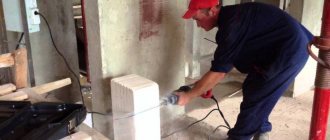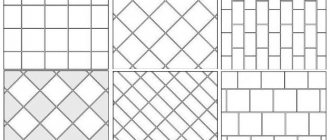Do-it-yourself chainsaw carburetor adjustment
For an independent carburetor option, you need to familiarize yourself with its structure and understand the procedure for the work that is carried out to adjust the parts responsible for the proper functioning of the components of the device and parts close to it.
It is necessary to carefully handle items for the system option, and also to determine whether the set characteristics correspond to very acceptable values.
About the carburetor design
The carburetor serves to mix the flammable mixture with air while maintaining predetermined proportions. If clear doses are not followed, the proper operation of the engine is at risk. When a huge amount of air enters during mixing of the components, but there is not enough fuel, then such a mixture is considered “lean”.
Oversaturation should not be allowed, because with a larger amount of fuel compared to air, malfunctions or engine wear are also likely. Carburetor adjustment is needed not only before initial use, but also when any differences in its operation are detected. Before starting to work with a chainsaw, do not forget to run it in.
Carburetor components
The carburetor design contains a standard set of parts, but may vary slightly depending on the manufacturer. Components:
- The basis . This is a special tube that is visually similar to an aerodynamic design. Air passes through it. In the transverse direction, a damper is located in the middle of the pipe. Its position can be changed. The more it is extended into the passage, the less air enters the engine.
- Diffuser . This is the constricted part of the tube. With its help, the air supply speed increases precisely in the segment from which the fuel comes out.
- Channels for fuel supply. The fuel mixture is contained in the float chamber, then passes into the nozzle, from which it flows into the atomizer.
- Float chamber . It is a separate structural element, reminiscent of the shape of a tank. Designed to constantly maintain the optimal level of fuel fluid before entering the channel from which air enters.
Don't know which chainsaw to choose?
Read our article. Are you looking for cheaper models, but reliable and time-tested? Pay attention to Russian-made chainsaws.
Or explore foreign chainsaw manufacturers such as Shtil.
Distinctive features
In our store you can buy a STIHL chainsaw at a price that is quite affordable for people involved in professional wood processing. The presence of factors such as:
makes the Stihl chainsaw the leader of this class of hand tools. You will never regret that you decided to buy a Shtil MS 661 chainsaw, since it is truly a very convenient and reliable mechanism for sawing and felling wood.
We have the best tool
If you need a Stihl chainsaw, the price of which is the best on the market, then you can purchase it in our company’s store. We offer our customers only the best certified tools from the manufacturer. Our price for the Stihl MS 661 chainsaw includes the manufacturer’s guaranteed obligations for the trouble-free operation of this machine. Therefore, if you need to buy a Stil chainsaw at a price that is quite reasonable, call the contact number or leave a request on the website.
What you need to have for setup
Each carburetor owner must have the necessary tools to adjust this system. There are three adjustment screws that are located on the body of the device. They have their own markings:
- L - screw for correcting low speeds.
- H - screw for adjusting high speed.
- T - regulates idle speed, in most cases used for experiments.
Chainsaw air filter
Before adjusting the carburetor, you need to prepare the device:
- The engine warms up, that is, it starts about 10 minutes before repairs, and turns off when starting work (see how to start a chainsaw).
- The air filter is checked and washed.
- The chain is stopped by turning screw T until it stops (see chain oil).
To carry out a safe repair, you need to prepare a flat surface where you can carefully place the device and turn the chain in the opposite direction. Need a tachometer. It determines whether there is a malfunction in the carburetor. When turning the screws, the sound should be perfect and absolutely smooth. If you notice squealing notes, the mixture is oversaturated.
Briefly about the main thing
A chainsaw is a difficult but useful tool. They can be used to cut down trees, trim branches, make logs for logs, prepare logs for beams or other building materials. And many professionals even use a chainsaw in their creativity.
I'm not that professional; a household model is enough for me to work with. It is easy for her to cut down trees of different thicknesses (except for the thickest ones) and prepare firewood. I also use it for cutting boards and logs. The tool is quite light and compact, so your hands don’t get tired of holding it.
When working, the most important thing is to protect yourself (helmet, mask, gloves, boots) and act carefully, especially the first time. When in doubt or when tired, it is better to stop and continue later than to accidentally make a mistake.
Checking acceleration operation
Need to do a little research. Acceleration of the device is initiated. It is necessary to evaluate the proper operation of the engine during maximum speed. When the engine is functioning correctly, it means that when you press the accelerator, the speed quickly increases to 15,000 rpm.
If this does not happen or the increase in speed is too slow, you must use the screw marked L. It turns counterclockwise. Moderate movements must be observed, since the turn cannot be more than 1/8 of a full circle.
Maximum number of revolutions
To limit this indicator, you need to use a screw marked H. To increase the number of revolutions, turn it clockwise, and to reduce them in the opposite direction. The maximum frequency should not exceed 15000 rpm.
If you make this figure larger, the device’s engine will wear out, which will lead to problems in the ignition system. When rotating this screw, you need to take into account the ignition processes of the device. If the slightest malfunctions appear, then the maximum speed value must be reduced.
Final check at idle
Before this procedure, it is necessary to carry out a full adjustment of the carburetor components when operating at maximum speed. Next, you should check the functioning of the device in idle cold mode. When the correct adjustment parameters are achieved, you will notice that the carburetor design closely matches the following criteria:
- When the idle cold mode is activated, the chain does not move.
Chainsaw accelerator
- When the accelerator is pressed even slightly, the engine accelerates at an accelerated pace. With gradual deepening of pressure, you can notice that the engine speed increases proportionately, reaching the maximum permissible values.
- When the engine is running, you can compare its sound to a four-stroke device.
If violations are noticed in the given parameters or the device has not been fully adjusted, you need to perform the main setup step again. Sometimes actions are performed incorrectly. In this case, the device may fail due to the loss of the correct node settings. In this case, you will have to contact a specialist.
Prerequisites for additional adjustments
Adjustment of fuel equipment is most often carried out when the octane number of the fuel changes, sudden temperature changes in the environment, or the need for prolonged operation of the tool at high-speed operating modes.
Preliminary adjustment of the chainsaw carburetor at the break-in stage is duplicated by the final adjustment, which is recommended to be performed using test equipment from the service department. Standard equipment includes a visual indicator of mixture quality and a tachometer. After the instrument reaches operating mode, the adjustment performed at a professional level is considered to be fully implemented.
Self-adjusting a chainsaw carburetor in the field is ineffective and, in some cases, unsafe.
Changes in power characteristics may be affected by:
- low quality or incomplete fuel supply;
- water getting into the carburetor;
- clogged jet or air intake filter clogged with sawdust.
Disassembling the carburetor if necessary to check or repair components
The design of different carburetor models is almost the same, so when working with them you can use the standard scheme. All elements must be removed carefully, and then laid out in the order given below , so that you can successfully place the items in place after the completion of the repair work.
Read:
Removing the Top Cover
- The top cover is removed. To do this, you need to unscrew the 3 bolts holding it in a circle.
- The foam rubber is also removed, since it is the upper component of the filter that conducts air.
- The fuel hose is removed.
- The drive thrust is output directly to it.
- The cable end is disconnected.
- The gasoline hose can be completely removed if you systematically pull it off the fitting.
To finally prepare the carburetor for major repairs or replacement of the smallest parts, you need to carefully disconnect it from the main system . Sometimes further disassembly is required. You should unscrew the components carefully and put the fasteners in groups, as these small parts are easily lost.
Video description
You can see how exactly the cuts should go in the video. While
learning how to cut correctly, you should not forget about a common situation. If the tire is stuck in the barrel, it should not be jerked sharply. First you need to turn off the engine and put on the brake, then manually carefully tilt the barrel until the chainsaw pops out. To prevent getting stuck, it is recommended to place small stakes during work.
Particularly thick trees are felled only with the help of special equipment and with the involvement of professionals. Beginners should not do this themselves, since there are many felling methods, and the choice depends on various factors.
Cutting down branches
Branches are pruned only from a fallen trunk. When working, you need to exercise special care and caution, as there is a high probability of the branch rebounding.
When working, you should follow several rules:
- First of all, it is important to secure the barrel so that it does not roll. It happens that the trunk rests on just one branch; after cutting it down, the tree tilts or begins to roll.
- First, cut down the lower branches, gradually moving towards the upper ones. They begin to work standing to the left of the tree.
- When working, the chainsaw can be pressed against a thigh or tree. The branches are cut off from the top by turning the tool on its side.
Cutting branches Source ghirardellitractor.it
- When considering how to properly cut down branches, it is worth remembering an important point. It is not recommended to use the nose part of the blade; it is better to cut with the middle and bottom part, otherwise the branches will bounce off.
- Thick branches can be cut down in sections, starting from the top. You may also need to make cuts on both sides.
If the blade is jammed, it is released as if it is stuck in the trunk: first turn off the tool, then pull the branch to the side.
Instructions for Chinese
To correctly configure the carburetor of a Chinese chainsaw, you must first remember the factory settings of the device, then turn on the engine. Subsequently, you will have to leave it running for several hours in order to accurately set your own parameters. Sometimes work is carried out only after ten minutes of engine operation, but many Chinese-made models require special handling.
Chinese chainsaw model
Adjustment procedure:
- Activities begin in idle mode . Using the adjusting screws, you need to achieve a systematic increase in engine speed, so you should first let it run at low speeds. A deviation from the norm is the movement of the chain along the bus. In this case, you need to adjust the outer screws to the optimal position so that the chain remains motionless.
- The transition to medium speed speed is carried out . Sometimes the engine starts to smoke. This defect can be eliminated by tightening the screw to supply a leaner fuel mixture.
In this case, the smoke will disappear, but the engine speed will increase. You need to adjust the settings until you reach a level where, when you press the throttle, the engine smoothly picks up speed, and no sudden jerks or interruptions are heard.
- The device's engine is being checked . The chainsaw is switched to minimum speed, and then the lever is quickly pressed. When pressed maximally, it is held for 3 seconds. If there are problems with the engine, you need to gradually loosen the screw until the optimal position is reached.
- The chainsaw should work for several hours in real conditions . You need to cut wood, and then inspect all the elements involved in this event. If there are deviations, they must be corrected using adjusting devices. When all defects have been eliminated and the optimal settings have been established to supply correctly concentrated fuel, the device setup process can be considered complete.
History of the company, the difference between the original and the fake
The German company STIHL was founded by Andreas Stihl in 1921 in Germany. The first chainsaw of this company was released in 1929. The unit weighed about 48 kg and was serviced by two operators. STIHL engineers continued development aimed at improving this unit. Over the long period of its existence, the first chainsaw model has changed greatly and decreased in weight, and also received many useful additions:
- the chainsaw chain was equipped with special cutting and scraping teeth;
- a system for automatically supplying chain lubrication was put into operation;
- received a centrifugal clutch;
- installed the first membrane-type carburetor;
- the gas-powered tool received special spring-mounted handle mounts that protect the operator from vibration during operation;
- chainsaw was equipped with additional protection that acted as a chain brake.
When adjusting a chainsaw carburetor
The chainsaw operates using a two-stroke internal combustion engine. Such a motor provides the tool with two important advantages - mobility and a high degree of performance. The fuel-air mixture is supplied to the engine cylinder via a carburetor. This carburetor needs adjustment or adjustment when:
A tachometer for a chainsaw is needed for running in the tool, since it is used to adjust the carburetor. Its setting using the device becomes more accurate, which has a positive effect on the operation and performance of the unit
Situations in which adjustment is necessary
New chainsaws are supplied by the manufacturer with already adjusted carburetors. This is called standard adjustment. But for the normal running-in process, it is necessary to reduce the maximum engine speed and adjust the carburetor. After break-in, the chainsaw needs fine tuning to achieve maximum engine efficiency.
Also, a signal for cleaning and adjustment is increased fuel consumption, which negatively affects the operation of the exhaust system. Simply put, the chainsaw begins to smoke heavily and the muffler becomes clogged with carbon deposits, which in turn will lead to a decrease in power.
If there is too much fuel in the mixture, engine parts are poorly lubricated and premature wear occurs. Also, a poor quality mixture can cause the engine to jam due to overheating (this is one of the reasons why the chainsaw will not start).
This is what a jammed, overheated piston looks like from a disassembled chainsaw with an incorrectly configured carburetor.
Adjustment is necessary when the engine does not idle, stalls, or does not develop full power. Carburetor adjustment should be carried out with clean air and fuel filters.
Tachometer for adjusting the carburetor of a chainsaw
Each carburetor on chainsaws has three adjusting bolts with springs. Each bolt is responsible for adjusting the corresponding parameter. These parameters are:
- L - regulation of the amount of fuel supply at low speeds
- H - regulation of the amount of fuel supply at high speeds
- T or LA—increase or decrease the amount of fuel-air mixture when the tool is idling
To adjust the carburetor, you will need to prepare thin screwdrivers (slotted) and a tachometer.
Do-it-yourself carburetor adjustment is done by performing the following manipulations:
- The cover with the air filter is removed, after which access to the high-voltage wires of the tool is opened. Such manipulations are carried out if a wire-type tachometer is used
- If a modern wireless type of device is used, then access to high-voltage wires is not required
- Start the tool engine, then connect the wires to the high-voltage cable
- The wireless device must be brought to the candle
- Now you need to pick up a screwdriver and start adjusting
- The bolt marked L must be screwed in clockwise until it stops, then loosened a quarter turn.
- The chain on the power tool will move, so you need to adjust the bolt T. You need to rotate the bolt in both directions until the chain on the tool stops moving
- Now you need to gas for 8-10 seconds
- To set the maximum number of revolutions on the tool, you will need to tighten the adjusting bolt H. In this case, you need to monitor the readings of the device that will display the number of revolutions
- At the final stage, you need to repeat the idle speed setting by moving the bolt T
Once the setup is done, you need to check the functionality of the tool in action. The absence of dips, jerks and jumps indicates that the procedure was performed correctly.
Video description
How to check chain lubrication is shown in this video:
- After starting and before you start using the Shtil chainsaw, the engine must run for at least a minute to fully warm up. To do this, squeeze the gas to the end.
- At the end, turn off the brake and check the lubricant supply. To do this, the instrument is brought to a light object (sheet of paper or wood) and held above it. If traces of oil appear on it, then there is enough lubrication.
Using the above method, start the chainsaw with a cold motor. If the tool has been running for some time and has not cooled down after that, there is no need to move the throttle valve.
How to make a tachometer for a chainsaw with your own hands
Making a tachometer for a chainsaw with your own hands is rational only if there is a single need for its use. If you are a regular owner of gas-powered tools, then it is recommended to acquire a factory-made device. Multifunction multimeters have a frequency measurement mode that can be used to calculate revolutions.
You can make the device yourself, but for such purposes you will need a soldering iron and some electronic consumables: resistors, diodes, capacitors. The head from a tape recorder is used as a speed indicator.
The video shows the finished device in action. The only drawback of such a device is low accuracy, as well as the need to calculate the number of revolutions, since the device displays decibels.
If you need to get the most accurate results for setting up a chainsaw, then experts recommend using factory tachometers (even if they are of Chinese origin).
Types of tachometers for chainsaws
In order to adjust the carburetor, wired devices are used, since they are several times cheaper than wireless ones. Wired devices are connected to the high-voltage wires of the instrument (for which there are special clamps) by wrapping them with 5-6 turns. Instructions are included with the device, so you should read it before use.
The disadvantage of wired devices is the need to remove the cover and air filter to get to the high-voltage wire. Wireless devices that measure shaft rotation speed even at a distance of 15-20 cm from the motor do not have this drawback.
If you know how to adjust the carburetor on a tool, you will not need to contact service centers. It is strongly recommended that you carry out the first setup according to the instructions, so that all subsequent times you can perform the procedure yourself without the help of specialists.
Attention, fake!
There is also sad news: every technique that is in demand among consumers, after a certain time, becomes counterfeit. Counterfeits come to us from China and, although they bear brand logos, they do not at all meet the declared (expected) quality. Fortunately, knowledgeable people have even learned to visually recognize the substitution.
READ How to Silence the Sound of a Chainsaw
They are ready to share this video information on the Internet, but we will describe these signs in the article.
- casting is rough, porous, low quality;
- body color is dull;
- The air filter screw is located at the top of the chainsaw. instead of the required end position of the original product;
- the shape of the caps of the fuel and oil tanks is also different: on the original saw, the caps are made to fit the screwdriver included in the kit, on the fake they are simple, slightly convex;
- serial numbers are completely missing;
- The chain brake is attached on one side, while the original “STIHL” MC 361 chainsaw has a double-sided mount.
- The fake chainsaw has a simplified carburetor without a built-in compensator:
- Non-original spark plugs are used without the corresponding STIHL .
In order to verify the authenticity of the STIHL MS 361 chainsaw, it is recommended to look at the instructions - it will also differ significantly from the original, which can be found on the Internet.
Well, the last check is










